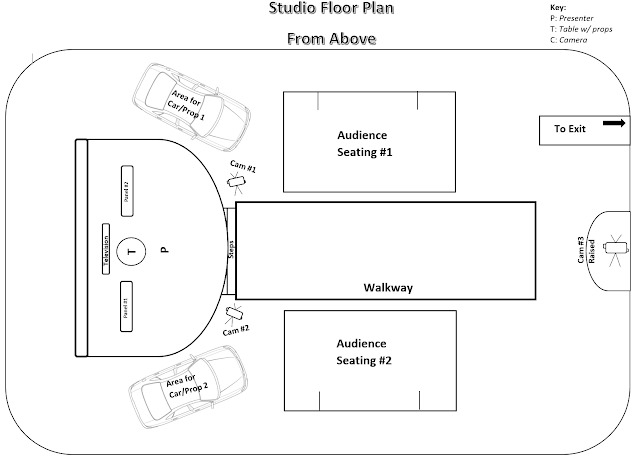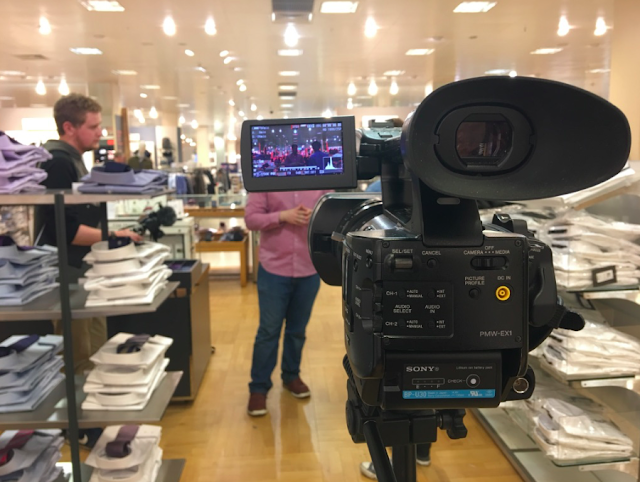TV News Unit | Lecture 2 - Developing Your Story
What To Do
- Copious research needs to be matched with copious (DETAILED AND ACCURATE!) note-taking.
- Be ORGANISED and ensure you keep your contacts and relevant information somewhere you can easily access it.
Who Said That?
- Whenever you are delivering information, ensure you ATTRIBUTE the information to RELIABLE sources - simply saying 'allegedly/apparently' is not enough without saying WHERE the information is from.
So what is a RELIABLE source?

- Government statistics
- Someone without an agenda
- Non profit organisations
Setting Up Your Story
- Just as with the documentary unit, the proof of your journalistic skills is when you try to set your story up to shoot it
By the time you set it up you should be clear about:
- What your story is (and is not)
- Who is in your story?
- Where it is (Location/s)
- When it is to be shot (schedule)
- How you will tell it (treatment/style/angle)
- And, obviously - WHY you are making the story?
Following Up Leads
- The contacts you make in the early stages of research should lead you to the final elements which you will include in your news story.
- Inevitably there will be decisions made on the basis of availability, location, cost etc, but bear in mind these decisions FRAME your story for the audience.
- Be sure you are including elements which are a FAIR and REASONABLE representation of the facts.
- STAY OBJECTIVE.
Don't Burn Bridges
- You never know when you might need someone again.
- Make sure you treat people with respect.
Be;
- Open and Fair
- Honest and Direct
- Aware of the intrusion you are making - respect their TIME.
- Treat others how you would expect to be treated!
- Very simple tip - thank contributors and let them know when/where the piece they feature in will be aired/published.
Television News Story Forms
5 Basic Types;
- Readers ("Tell" stories)
- OOVS/VO (Out of Vision/Voice-overs)
- VO/SOT (voice-overs/sound on tape)
Readers
- A short story which the presenter reads out with no video to accompany it or any full screen graphics, aka "tell" you the story.
- Usually used for shorter stories and possibly refer to a story which might have video at a future time as available.
OOV's
- These are stories which the presenter reads which also includes video material i.e. the voice over is performance by the presenter live whilst the video plays for all or part of it.
- Often quite short - 20-30".
- If the presenter is reading over graphics it might be annotated as VO/g.
- OOV's add variety of pace to the newscast.
- They are especially useful when covering an event and it is not necessary to hear from someone at that event (i.e. it would not add anything to the story)
- e.g. Covering a minor event such as a local street fair.
- They are also used if there is a late-breaking story which has been sent through and there isn't time to produce a full package.
- It may also depend on whether there are many other more 'important' full packages already in the bulletin.
How to make an OOV
- Source your story and relevant information.
- Expand and script information to produce a crafted story.
- Boil down to the essentials of the story and find your angle.
- Can use archive or stock photos.
- Graphics also useful - usually for statistics and other data, quotes, charts and graphs, maps to aid explanation to the viewer.
OOV/SOT
- Combination of the OOV (news anchor's voice over pictures) + 'sound-on-tape' (SOT)
- SOT made up of interview clips.
- Good for varying pace of the programme allows a more in-depth news report, but not as in depth as a full news package.
- Useful for covering an events and need someone there to comment (preferably someone directly affected rather than 'official spokesperson')
News Package
- Fully self-contained formed news pieces.
- Unlike OOVs and OOV/SOTs the news presenter is not involved in the storytelling itself, but rather in introducing and wrapping up the story (usually introducing and saying thank you to the reporter at the end) - the reporter takes the lead on the story.
- Therefore the story needs to be worked out BEFORE the shoot to include elements such as the piece to camera.
- This can be done either on paper or if time pressure does not allow (as in the case of a fast turn around story) then it will have to be worked out on the spot prior to shooting.
- Copious research needs to be matched with copious (DETAILED AND ACCURATE!) note-taking.
- Be ORGANISED and ensure you keep your contacts and relevant information somewhere you can easily access it.
Who Said That?
- Whenever you are delivering information, ensure you ATTRIBUTE the information to RELIABLE sources - simply saying 'allegedly/apparently' is not enough without saying WHERE the information is from.
So what is a RELIABLE source?

- Government statistics
- Someone without an agenda
- Non profit organisations
Setting Up Your Story
- Just as with the documentary unit, the proof of your journalistic skills is when you try to set your story up to shoot it
By the time you set it up you should be clear about:
- What your story is (and is not)
- Who is in your story?
- Where it is (Location/s)
- When it is to be shot (schedule)
- How you will tell it (treatment/style/angle)
- And, obviously - WHY you are making the story?
Following Up Leads
- The contacts you make in the early stages of research should lead you to the final elements which you will include in your news story.
- Inevitably there will be decisions made on the basis of availability, location, cost etc, but bear in mind these decisions FRAME your story for the audience.
- Be sure you are including elements which are a FAIR and REASONABLE representation of the facts.
- STAY OBJECTIVE.
Don't Burn Bridges
- You never know when you might need someone again.
- Make sure you treat people with respect.
Be;
- Open and Fair
- Honest and Direct
- Aware of the intrusion you are making - respect their TIME.
- Treat others how you would expect to be treated!
- Very simple tip - thank contributors and let them know when/where the piece they feature in will be aired/published.
Television News Story Forms
5 Basic Types;
- Readers ("Tell" stories)
- OOVS/VO (Out of Vision/Voice-overs)
- VO/SOT (voice-overs/sound on tape)
Readers
- A short story which the presenter reads out with no video to accompany it or any full screen graphics, aka "tell" you the story.
- Usually used for shorter stories and possibly refer to a story which might have video at a future time as available.
OOV's
- These are stories which the presenter reads which also includes video material i.e. the voice over is performance by the presenter live whilst the video plays for all or part of it.
- Often quite short - 20-30".
- If the presenter is reading over graphics it might be annotated as VO/g.
- OOV's add variety of pace to the newscast.
- They are especially useful when covering an event and it is not necessary to hear from someone at that event (i.e. it would not add anything to the story)
- e.g. Covering a minor event such as a local street fair.
- They are also used if there is a late-breaking story which has been sent through and there isn't time to produce a full package.
- It may also depend on whether there are many other more 'important' full packages already in the bulletin.
How to make an OOV
- Source your story and relevant information.
- Expand and script information to produce a crafted story.
- Boil down to the essentials of the story and find your angle.
- Can use archive or stock photos.
- Graphics also useful - usually for statistics and other data, quotes, charts and graphs, maps to aid explanation to the viewer.
OOV/SOT
- Combination of the OOV (news anchor's voice over pictures) + 'sound-on-tape' (SOT)
- SOT made up of interview clips.
- Good for varying pace of the programme allows a more in-depth news report, but not as in depth as a full news package.
- Useful for covering an events and need someone there to comment (preferably someone directly affected rather than 'official spokesperson')
News Package
- Fully self-contained formed news pieces.
- Unlike OOVs and OOV/SOTs the news presenter is not involved in the storytelling itself, but rather in introducing and wrapping up the story (usually introducing and saying thank you to the reporter at the end) - the reporter takes the lead on the story.
- Therefore the story needs to be worked out BEFORE the shoot to include elements such as the piece to camera.
- This can be done either on paper or if time pressure does not allow (as in the case of a fast turn around story) then it will have to be worked out on the spot prior to shooting.


Comments
Post a Comment